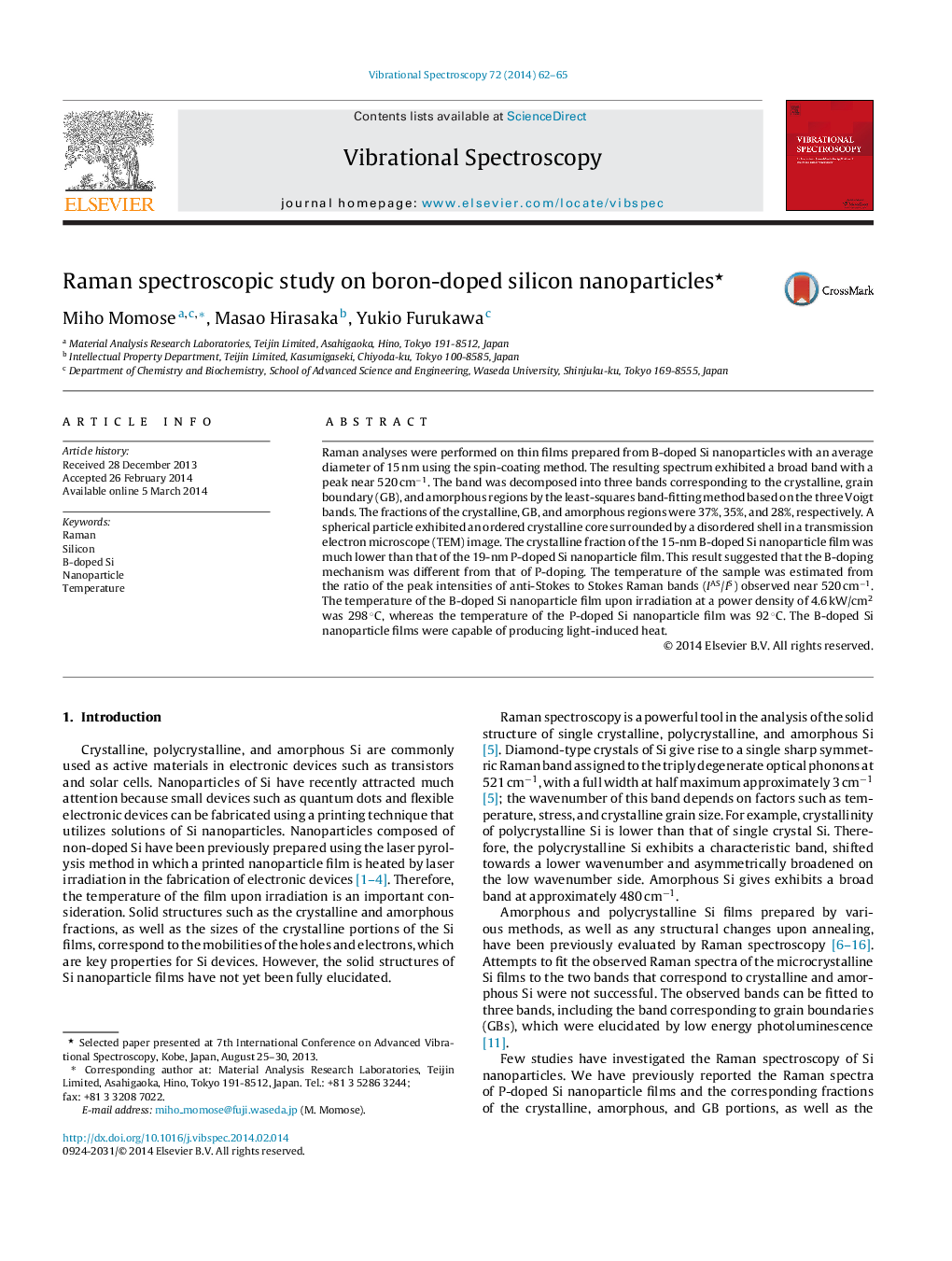| Article ID | Journal | Published Year | Pages | File Type |
|---|---|---|---|---|
| 1251828 | Vibrational Spectroscopy | 2014 | 4 Pages |
Raman analyses were performed on thin films prepared from B-doped Si nanoparticles with an average diameter of 15 nm using the spin-coating method. The resulting spectrum exhibited a broad band with a peak near 520 cm−1. The band was decomposed into three bands corresponding to the crystalline, grain boundary (GB), and amorphous regions by the least-squares band-fitting method based on the three Voigt bands. The fractions of the crystalline, GB, and amorphous regions were 37%, 35%, and 28%, respectively. A spherical particle exhibited an ordered crystalline core surrounded by a disordered shell in a transmission electron microscope (TEM) image. The crystalline fraction of the 15-nm B-doped Si nanoparticle film was much lower than that of the 19-nm P-doped Si nanoparticle film. This result suggested that the B-doping mechanism was different from that of P-doping. The temperature of the sample was estimated from the ratio of the peak intensities of anti-Stokes to Stokes Raman bands (IAS/IS) observed near 520 cm−1. The temperature of the B-doped Si nanoparticle film upon irradiation at a power density of 4.6 kW/cm2 was 298 °C, whereas the temperature of the P-doped Si nanoparticle film was 92 °C. The B-doped Si nanoparticle films were capable of producing light-induced heat.
